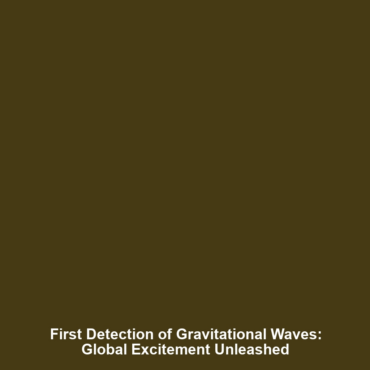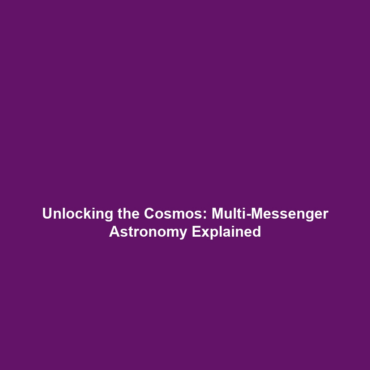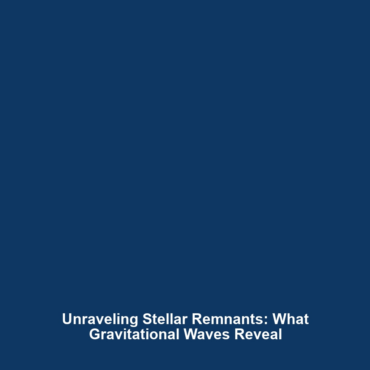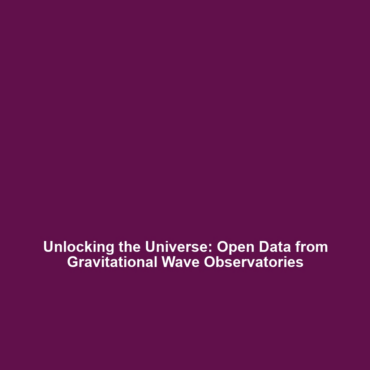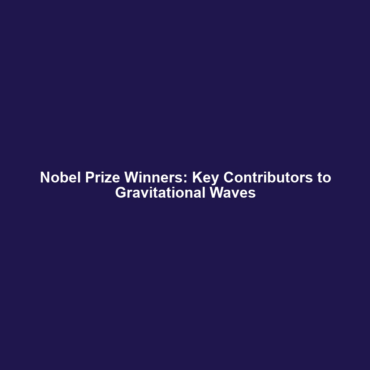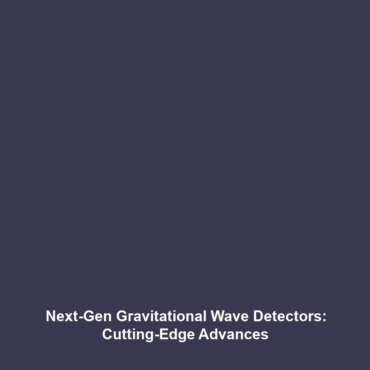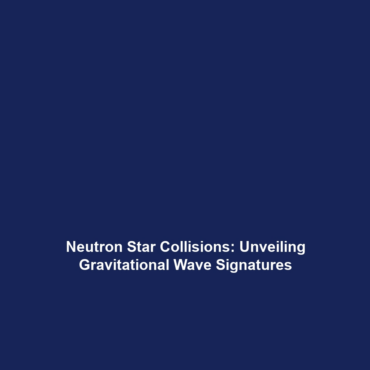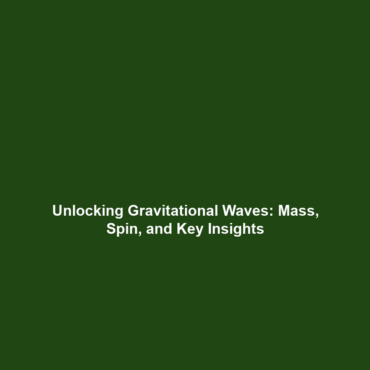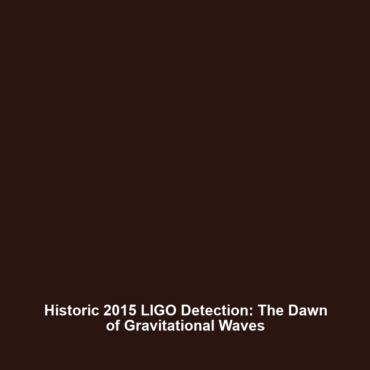The Excitement of the First Detection of Gravitational Waves and Its Global Media Coverage
Introduction
The first detection of gravitational waves on September 14, 2015, marked a monumental moment in the field of astronomy and physics. This groundbreaking achievement not only confirmed a key prediction of Albert Einstein’s general theory of relativity but also opened an entirely new avenue for understanding the universe. The global media extensively covered this scientific breakthrough, highlighting its significance and the excitement it generated among researchers and the public alike. Such milestones in gravitational wave astronomy continue to shape scientific discourse and elevate the importance of this transformative field.
Key Concepts of Gravitational Waves
Gravitational waves are ripples in spacetime caused by the acceleration of massive objects, such as merging black holes or neutron stars. The detection of these waves is facilitated by highly sensitive instruments like LIGO (Laser Interferometer Gravitational-Wave Observatory). Here are some key concepts related to their detection and coverage:
- Detection Mechanisms: Instruments like LIGO utilize laser beams to measure minute changes in distance caused by passing gravitational waves.
- Einstein’s Theory: The detection has validated Einstein’s equations, enhancing our understanding of fundamental physics.
- Media Impact: The extensive coverage provided a platform for public engagement and raised awareness about advanced astronomical technology.
Applications and Real-World Uses
Understanding how the excitement of the first detection impacts the world of gravitational waves goes beyond mere academic interest. The implications of this discovery include:
- Astrophysical Insights: Gravitational waves enable scientists to observe cosmic events that are invisible through conventional telescopes.
- Technological Advancements: The precision required in gravitational wave detectors has led to developments in various fields, including telecommunications and data processing.
- Multimessenger Astronomy: This field combines gravitational wave data with traditional electromagnetic observations, leading to richer astronomical narratives.
Current Challenges in Gravitational Wave Studies
Despite the enthusiasm surrounding the first detection, challenges abound in the study and application of gravitational waves:
- Challenges of detecting faint signals among background noise.
- Issues in data interpretation and the need for advanced algorithms.
- Limitations in the public understanding of gravitational waves, necessitating more comprehensive educational outreach.
Future Research and Innovations
Future research in gravitational waves is poised to unveil further mysteries of the universe. Efforts include:
- Next-generation observatories like the Einstein Telescope and Cosmic Explorer, which aim to enhance detection sensitivity.
- Innovations in data analysis algorithms powered by artificial intelligence to improve signal detection.
- Increased collaborations among international research teams to foster a global scientific network.
Conclusion
The excitement of the first detection of gravitational waves represents a pivotal moment in both physics and media coverage. It showcases humanity’s quest for knowledge and heralds a new era in astrophysics that can lead to unprecedented discoveries about the universe. As research progresses, engaging with this field will not only foster deeper scientific inquiry but also enrich our collective understanding of the cosmos. For more information on gravitational waves and their implications, consider reading further on related topics such as Detecting Gravitational Waves or The Impact on Astrophysics.
